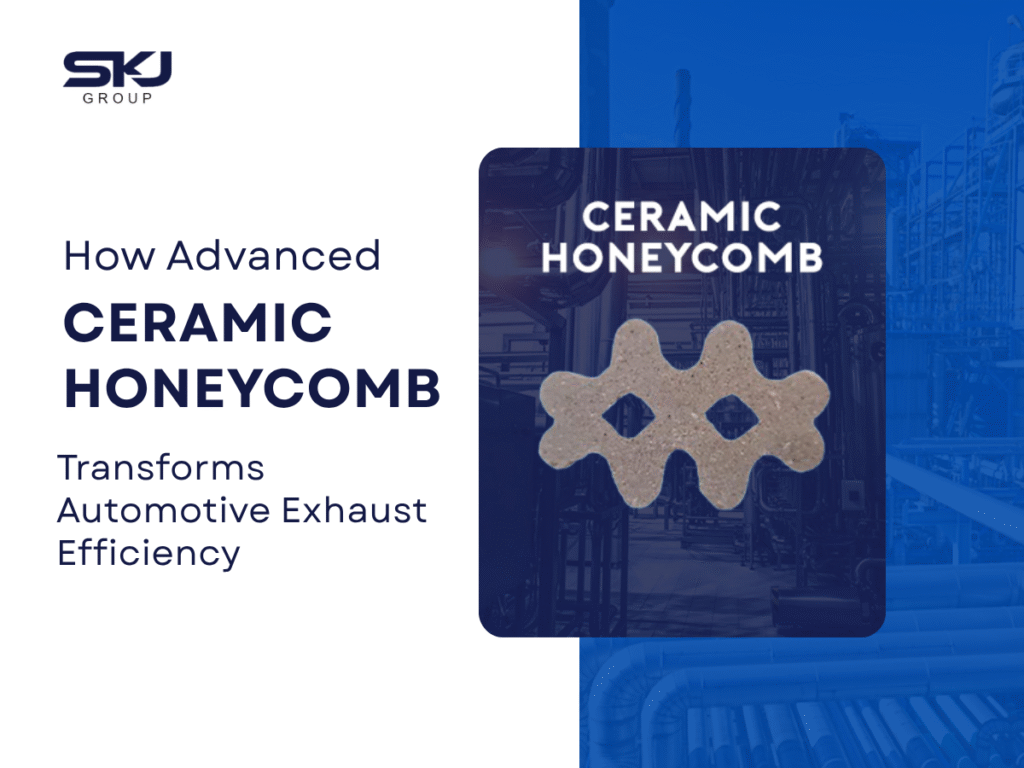In the pursuit of cleaner air and stricter emission regulations, the automotive industry has turned to innovative technologies to reduce harmful pollutants. One such breakthrough is the use of advanced ceramic honeycomb structures in catalytic converters. These structures play a pivotal role in enhancing exhaust efficiency, ensuring vehicles meet environmental standards while maintaining performance.
Understanding the Role of Advanced Ceramic Honeycomb in Exhaust Systems
At the heart of modern catalytic converters lies the ceramic honeycomb substrate. This structure serves as a support for the catalyst, facilitating the conversion of toxic gases into less harmful emissions. The honeycomb design offers several advantages:
- High Surface Area: The intricate channels provide a vast surface for catalytic reactions.
- Thermal Stability: Ceramic materials can withstand high temperatures, ensuring durability.
- Low Pressure Drop: The design allows exhaust gases to flow smoothly, minimizing engine strain.
Materials like cordierite and alumina are commonly used due to their thermal properties and resistance to thermal shock. These materials ensure that the catalytic converter remains effective over time, even under extreme conditions.
The Science Behind Ceramic Honeycomb Catalysts
Ceramic honeycomb catalysts operate through a series of chemical reactions facilitated by the catalyst coating on the ceramic surface. As exhaust gases pass through the honeycomb structure, the following transformations occur:
- Carbon Monoxide (CO) Oxidation: CO is converted into carbon dioxide (CO₂).
- Hydrocarbon (HC) Oxidation: Unburned hydrocarbons are transformed into carbon dioxide and water vapor.
- Nitrogen Oxides (NOₓ) Reduction: NOₓ compounds are broken down into nitrogen (N₂) and oxygen (O₂).
This process significantly reduces the emission of harmful pollutants, contributing to cleaner air and compliance with environmental regulations.
Advantages of Advanced Ceramic Honeycomb in Exhaust Systems
The integration of advanced ceramic honeycomb structures offers several benefits:
- Enhanced Emission Control: Improved catalyst support leads to more efficient pollutant conversion.
- Durability: Resistance to high temperatures and thermal shock extends the lifespan of the catalytic converter.
- Cost-Effectiveness: Reduced need for maintenance and longer replacement intervals lower overall vehicle operating costs.
- Performance Maintenance: Minimal impact on exhaust flow ensures that engine performance remains optimal.
These advantages make advanced ceramic honeycomb structures a preferred choice for automotive manufacturers and consumers alike.
Applications Beyond Automotive Exhaust Systems
While primarily used in vehicles, the benefits of ceramic honeycomb structures extend to other areas:
- Industrial Emission Control: Used in power plants and chemical industries to reduce harmful emissions.
- Regenerative Thermal Oxidizers (RTOs): Ceramic honeycombs store and transfer heat efficiently, aiding in the breakdown of pollutants.
- Selective Catalytic Reduction (SCR): Employed in reducing nitrogen oxides in industrial exhaust systems.
These applications highlight the versatility and effectiveness of ceramic honeycomb structures in various emission control systems.
Choosing the Right Ceramic Honeycomb Supplier
When selecting a ceramic honeycomb manufacturer, consider the following factors:
- Material Quality: Ensure the use of high-grade materials like cordierite or alumina for optimal performance.
- Customization Options: Look for suppliers offering tailored solutions to meet specific vehicle or industrial requirements.
- Compliance with Standards: Verify that products meet international emission and quality standards.
- Reputation and Experience: Choose suppliers with a proven track record in the industry.
By partnering with a reliable ceramic honeycomb supplier in the USA, you can ensure the longevity and efficiency of your exhaust systems.
FAQ’s About Advanced Ceramic Honeycomb
1. Why is a honeycomb structure used in catalytic converters?
The honeycomb structure provides a large surface area for the catalyst, facilitating efficient chemical reactions while maintaining low exhaust flow resistance.
2. What is the structure of a ceramic honeycomb?
A ceramic honeycomb consists of numerous parallel channels running through a ceramic block, forming a grid-like pattern that maximizes surface area.
3. How do ceramic catalytic converters work?
Ceramic catalytic converters use a ceramic honeycomb substrate coated with precious metals to convert harmful exhaust gases into less harmful substances through chemical reactions.
Conclusion
Advanced ceramic honeycomb structures have revolutionized automotive exhaust systems by providing a highly efficient, durable, and cost-effective solution for emission control. Their unique honeycomb design maximizes surface area, enhances chemical reactions in catalytic converters, and ensures minimal pressure drop, helping vehicles meet stringent environmental standards.
By choosing a reliable ceramic honeycomb supplier in the USA, automotive companies can ensure long-lasting performance, reduced emissions, and compliance with global regulations. From improving vehicle efficiency to supporting industrial emission control, advanced ceramic honeycomb continues to play a critical role in driving sustainable automotive technologies forward.


